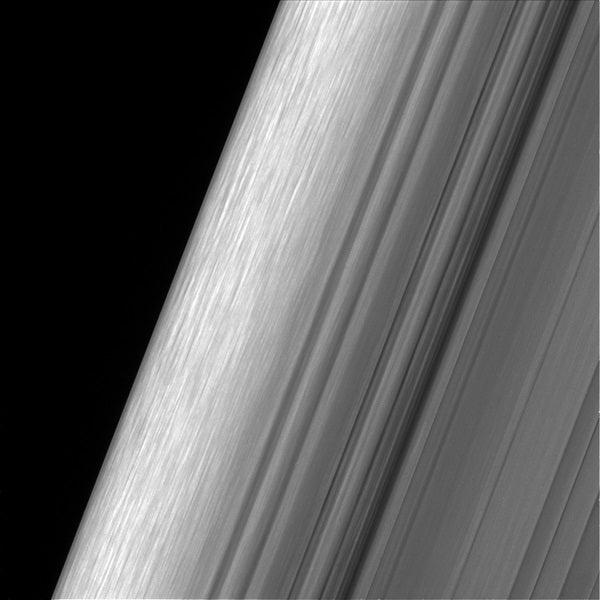Saturn’s ring system is unique among all the planets in our solar system. Ever since entering orbit around Saturn on July 1, 2004, the Cassini spacecraft has sent back stunning images of the gas giant, its moons, and, of course, its rings. Even as the mission nears its end on September 15, 2017, it’s still showing us never-before-seen details of the rings and the icy particles that comprise them.
In preparation for the Grand Finale portion of its mission, the Cassini spacecraft has begun performing a series of “ring grazes” that are taking it closer and closer to the subject of its study. Now, the Cassini team has released the most detailed images of the outer parts of Saturn’s main rings to date in a recent press release.
Although Cassini actually approached the rings more closely as it entered orbit in 2004, the images it took at that time were not as detailed as the ones it’s returning now. That’s due to several factors, including the lighting of the rings and the speed of the spacecraft at the time. While previous close-up images of the rings used short exposures and only imaged the rings while backlit, Cassini is now providing backlit and sunlit pictures, and will continue to send more such photos back to Earth as it passes by these structures every week in the coming months.
Cassini’s most recent images feature the highest level of detail achieved yet, resolving structures that are just 0.3 miles (1,584 feet or 550 meters) across — that’s roughly the size of some of Earth’s tallest buildings. The Burj Khalifa in Dubai (currently the world’s tallest building) is 2,717 feet (828 meters) tall; the famous Willis Tower in Chicago is 1,451 feet (442 meters) high.
Cassini Imaging Team Lead Carolyn Porco, currently at the Space Science Institute in Boulder, CO, was responsible for planning the initial ring images that have remained the best available for over a decade. Now, she says, “I am taken aback by how vastly improved are the details in this new collection.” Cassini scientist Matthew Tiscareno of the SETI Institute in Mountain View, CA, planned these newest images. He adds, “These close views represent the opening of an entirely new window onto Saturn’s rings, and over the next few months we look forward to even more exciting data as we train our cameras on other parts of the rings closer to the planet.”
Saturn’s ring system is not only unique, but amazingly complex as well. The rings are made up of icy particles that range in size from dust grains to mountain-sized boulders measuring miles across, and their behavior is intricately intertwined with many of Saturn’s moons. In fact, many structures within in the rings, including ripples and clumps, are due to interactions with moonlets either shepherding the rings as they orbit alongside them, or orbiting embedded within the rings themselves. And when Cassini begins the 22 orbits that will constitute its final phase in late April, astronomers anticipate surprises to come as the spacecraft sends back ever-more-stunning views of this unique, beautiful, and intriguing ring system.










